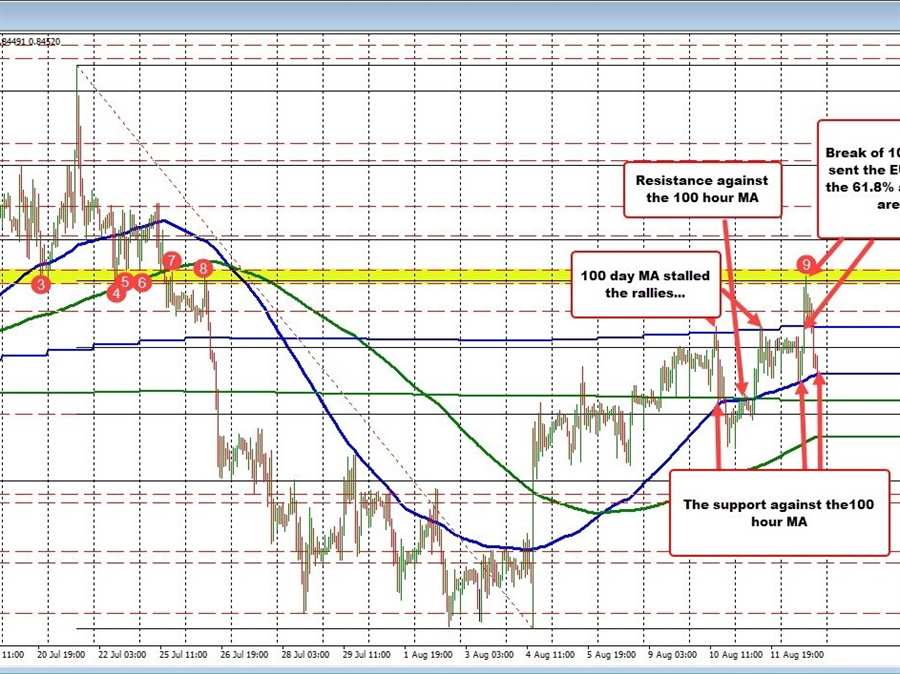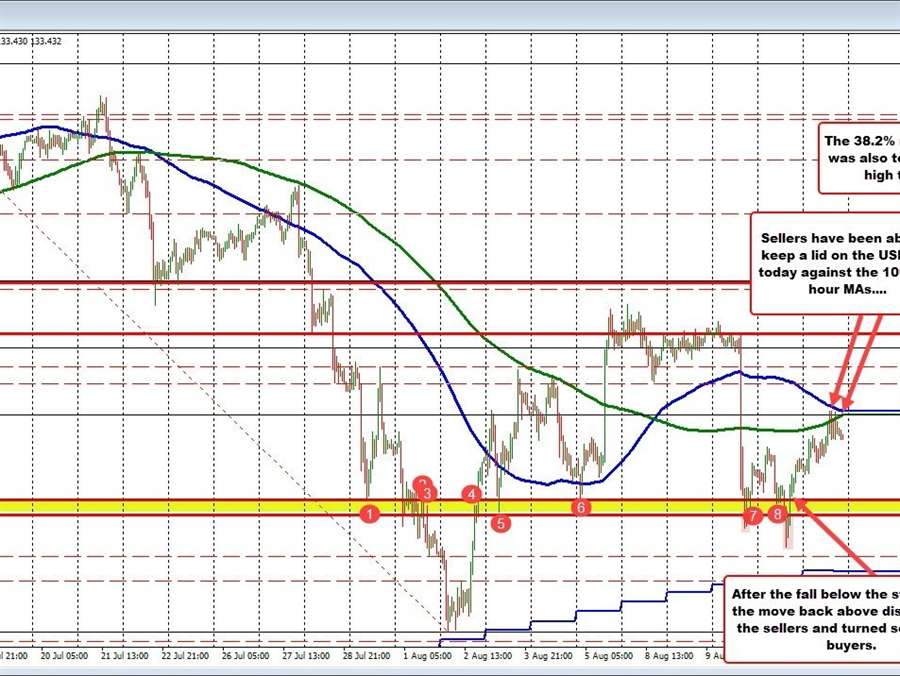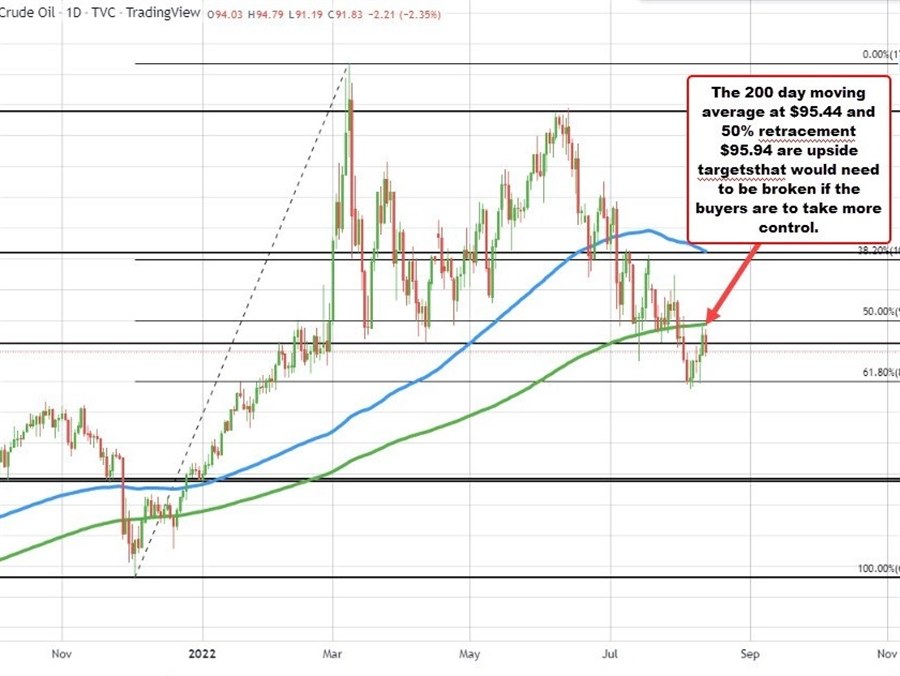- Today’s daily candle, while closing only in apx 4 hours, is now showing a sign that bulls are failing to break the presented channel to the upside, following this 4th attempt to do so, on the daily timeframe.
- Even if we had a coin flip (50% chance to win, 50% chance to lose) for this trade, the reward vs risk merits to short BTCUSD here. Why? Because the profit potential is double the risk, for the first part of this trade plan, and the profit potential is 4 times the risk, for the 2nd part of the trade plan, as shown within today’s BTCUSD technical analysis video
- Furthermore, some traders can leave 25% of the position riding the possible down movement, since this channel, is also a potential bear flag
Bitcoin technical analysis: Oscilators for BTCUSD on the daily timeframe
| Name | Value | Action |
| Relative Strength Index (14) | 63.04 | Neutral |
| Stochastic %K (14, 3, 3) | 82.92 | Neutral |
| Commodity Channel Index (20) | 130.92 | Sell |
| Average Directional Index (14) | 21.60 | Neutral |
| Awesome Oscillator | 1503.27 | Neutral |
| Momentum (10) | 2000.24 | Buy |
| MACD Level (12, 26) | 555.31 | Buy |
| Stochastic RSI Fast (3, 3, 14, 14) | 100.00 | Neutral |
| Williams Percent Range (14) | -12.21 | Neutral |
| Bull Bear Power | 1497.19 | Neutral |
| Ultimate Oscillator (7, 14, 28) | 52.68 | Neutral |
Tags: Bitcoin
Bitcoin
Bitcoin is the largest and world’s first digital currency launched back in 2009 by the entity, Satoshi Nakamoto. Being a digital currency, a defining feature of Bitcoin is that it functions without a central bank or single administrator. Rather, Bitcoin instead can be sent by peer-to-peer (P2P) networking, which is itself absent of any intermediaries.Instead of being a physical currency, Bitcoins represent pieces of digital code that can be sent and received across a kind of distributed ledger network called a blockchain. As Bitcoins are not issued or backed by any governments or central banks, it is considered to be legal tender. Transactions on the Bitcoin network are confirmed by a network of computers (or nodes) that solve a series of complex equations. This process is called Bitcoin mining. In exchange for Bitcoin mining, computers receive rewards in the form of new Bitcoins. Over time, mining grows increasingly difficult, leading subsequent rewards to become smaller and smaller. Given the structure of code, there will only ever be 21 million Bitcoins in existence. However, as of 2020, there were already 18.3 million Bitcoins in circulation. Bitcoin Making HistorySince its launch back in 2009, Bitcoin has remained the most popular and largest cryptocurrency in terms of market cap in the world. Its popularity has also contributed significantly to the release of thousands of other cryptocurrencies, that are now known as altcoins. At its inception, the crypto market was originally hegemonic, though presently the landscape contains countless altcoins.Bitcoin has also been controversial since its original launch. It has been heavily criticized for its use in illegal transactions and money laundering given its decentralized nature.As Bitcoin is impossible to trace, this makes the cryptocurrency an ideal target for illicit behavior. Critics also point to its high electricity consumption for mining, rampant price volatility, and thefts from exchanges. Bitcoin has been seen by some as a speculative bubble given its lack of oversight.
Bitcoin is the largest and world’s first digital currency launched back in 2009 by the entity, Satoshi Nakamoto. Being a digital currency, a defining feature of Bitcoin is that it functions without a central bank or single administrator. Rather, Bitcoin instead can be sent by peer-to-peer (P2P) networking, which is itself absent of any intermediaries.Instead of being a physical currency, Bitcoins represent pieces of digital code that can be sent and received across a kind of distributed ledger network called a blockchain. As Bitcoins are not issued or backed by any governments or central banks, it is considered to be legal tender. Transactions on the Bitcoin network are confirmed by a network of computers (or nodes) that solve a series of complex equations. This process is called Bitcoin mining. In exchange for Bitcoin mining, computers receive rewards in the form of new Bitcoins. Over time, mining grows increasingly difficult, leading subsequent rewards to become smaller and smaller. Given the structure of code, there will only ever be 21 million Bitcoins in existence. However, as of 2020, there were already 18.3 million Bitcoins in circulation. Bitcoin Making HistorySince its launch back in 2009, Bitcoin has remained the most popular and largest cryptocurrency in terms of market cap in the world. Its popularity has also contributed significantly to the release of thousands of other cryptocurrencies, that are now known as altcoins. At its inception, the crypto market was originally hegemonic, though presently the landscape contains countless altcoins.Bitcoin has also been controversial since its original launch. It has been heavily criticized for its use in illegal transactions and money laundering given its decentralized nature.As Bitcoin is impossible to trace, this makes the cryptocurrency an ideal target for illicit behavior. Critics also point to its high electricity consumption for mining, rampant price volatility, and thefts from exchanges. Bitcoin has been seen by some as a speculative bubble given its lack of oversight.
Read this Term, BTC, BTCUSD, bitcoin technical analysis
Technical Analysis
In financial trading, technical analysis refers to the method of studying the previous history and price movements of an instrument, such as foreign exchange, stocks, commodities, etc.Key determinants include an asset’s historical price action, chart patterns, volume, and other mathematical based visual tools, in order to predict future movements of that instrument. Traders who utilize various means of technical analysis are known by a variety of terms, such as technical traders, technical analysts, or technicians.The crux behind technical analysis is the notion that past performance of a financial asset is a potential evidence for future activity. Unlike fundamental analysis, technical analysis does not bother with the causes of price fluctuations; it only deals with its effects. Therefore, technical traders diligently observe historical charts of the instrument they’re interested in trading. By applying a number of techniques, technical analysis ultimately helps forecast how prices will act, sometimes in relation to time as well. There are a multitude of visual tools available for the technical trader, with the most popular of them included in all of the major broker platforms today. Understanding Technical AnalysisTechnical analysis itself consists of a number of different methods, which generally fall into two main categories – leading indicators or lagging indicators. Leading indicators refer to those charting tools which enable the trader to predict the movement of an asset before it actually occurs. Such leading techniques include Fibonacci, pivot points, trend lines, divergence and harmonic trading, and are popular with traders who prefer to trade reversals. Lagging indicators are those visual tools which enable a trader to take advantage of a strong trend, entering upon it whilst in formation; such tools include the MACD, the Awesome Oscillator, and moving averages. Technical traders don’t all use the same tools of course, and even a trader that uses a particular indicator. For example, the Stochastic Oscillator will probably use it in a different manner to another trader using the same indicator or set of indicators, making technical analysis extremely subjective. Having said that, there is merit to technical trading, and as unintuitive as it may seem, previous price patterns do appear time and time again.As an increasing number of traders seek specific market points, the probability of those points holding significance also increases.
In financial trading, technical analysis refers to the method of studying the previous history and price movements of an instrument, such as foreign exchange, stocks, commodities, etc.Key determinants include an asset’s historical price action, chart patterns, volume, and other mathematical based visual tools, in order to predict future movements of that instrument. Traders who utilize various means of technical analysis are known by a variety of terms, such as technical traders, technical analysts, or technicians.The crux behind technical analysis is the notion that past performance of a financial asset is a potential evidence for future activity. Unlike fundamental analysis, technical analysis does not bother with the causes of price fluctuations; it only deals with its effects. Therefore, technical traders diligently observe historical charts of the instrument they’re interested in trading. By applying a number of techniques, technical analysis ultimately helps forecast how prices will act, sometimes in relation to time as well. There are a multitude of visual tools available for the technical trader, with the most popular of them included in all of the major broker platforms today. Understanding Technical AnalysisTechnical analysis itself consists of a number of different methods, which generally fall into two main categories – leading indicators or lagging indicators. Leading indicators refer to those charting tools which enable the trader to predict the movement of an asset before it actually occurs. Such leading techniques include Fibonacci, pivot points, trend lines, divergence and harmonic trading, and are popular with traders who prefer to trade reversals. Lagging indicators are those visual tools which enable a trader to take advantage of a strong trend, entering upon it whilst in formation; such tools include the MACD, the Awesome Oscillator, and moving averages. Technical traders don’t all use the same tools of course, and even a trader that uses a particular indicator. For example, the Stochastic Oscillator will probably use it in a different manner to another trader using the same indicator or set of indicators, making technical analysis extremely subjective. Having said that, there is merit to technical trading, and as unintuitive as it may seem, previous price patterns do appear time and time again.As an increasing number of traders seek specific market points, the probability of those points holding significance also increases.
Read this Term, bitcoin price forecast, bitcoin trade idea








